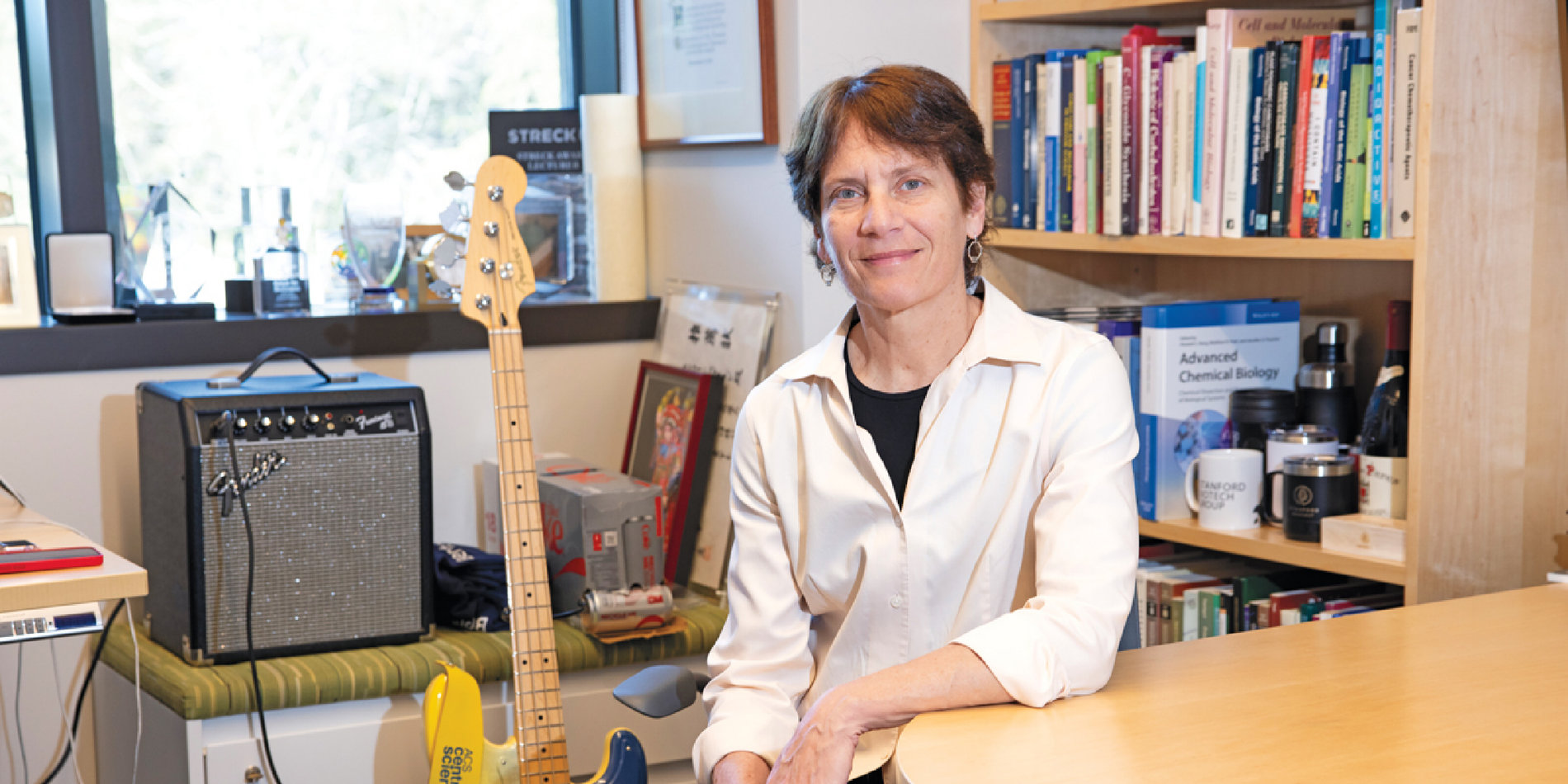Michael Fischbach wants to build a microbiome from the ground up. So what do we need to get there?

Scientists have long looked deep into soil and oceans to find microbes and study the molecules they produce. Those dirt explorers have advanced medicine, and now they are looking into an untapped source of insight closer to home: the microbes that exist in and on humans. Associate professor of bioengineering Michael Fischbach, MAC3 Paul and Mildred Berg Faculty Scholar in Stanford ChEM-H and Willard R. and Inez Kerr Bell Faculty Scholar in the School of Engineering, studies those microbes, and here, he discusses why the microbiome is worth studying, the ways his lab hopes to advance our understanding of these complex communities, and what drew him to ChEM-H.
Why are you interested in studying the microbiome?
The human microbiota, the bacteria that live on and inside humans, affect several important systems in the human host, like the immune response and metabolism. This is interesting from a basic perspective and through the lens of applications. If we learn how exactly the microbiome induces a highly specific immune response or tunes the way the host shuttles food molecules around, not only would we understand something fundamental about how humans work, but it would also give us a lever to pull, a way to manipulate human biology that we don’t currently have.
What has been so hard about studying the microbiome?
One of the things that has made the microbiome hard to study is that we lack good tools to take it apart in a reductionist way. Most of what we know about biology has been learned by knocking out one gene at a time from mice, from flies, from worms and seeing what happens. We don’t have a way of knocking out one gene or one bacterial species from the microbiome – the tools to do that don’t exist. I cannot overstate the importance of developing genetic tools for a biological system. It’s hard to do any work, let alone instrumental work that tells us how or why the microbiome functions as it does, if you can’t pull the pieces apart genetically.
What kinds of tools is your lab developing to study and manipulate the human microbiome?
We are working on two kinds of tools. The first is that we are coming up with ways of building very complex yet completely defined bacterial communities that are within spitting distance of the natural complexity of the gut microbiome. By putting these defined communities into mice, we would be constructing a model that is faithful to – and captures most of the biology of – the native microbiome.
The second bit of what we need is better genetic tools for the microbiome. Of the most common bacterial species in the gut, fewer than 10 percent are genetically manipulable. This is a stunning gap in our ability to understand the microbiome, and an opportunity to develop technology that will have a big impact. We are coming up with ways to engineer these organisms, focusing on the species that are most common, or represent important differences between healthy humans and people with disease.
If we put together these two tools, we could in principle construct from scratch two highly complex communities of organisms that differ by only one gene out of several hundred thousand. We could see the effect that one gene has on immunity, metabolism or other biological processes in mice. This would be powerful. That’s the kind of experiment that we think will stand the test of time, so that’s what we’re working toward.
What made you decide to join Stanford ChEM-H?
ChEM-H was too interesting a place to turn down. Most important were the people, both those who were already part of ChEM-H and those who had committed to joining. The quality of the people – not just Chaitan Khosla, Carolyn Bertozzi, and Peter Kim, but the also the assistant professors – was just tremendous. If you share a space with other people, as we will in the new Stanford ChEM-H Building, they are going to influence your research in one way or another. I could not imagine a more exciting group of people to be around.
I also believe deeply in the mission of ChEM-H. I think this is a place that is going to change the way we address problems in human health. It is easy for me to imagine somebody from ChEM-H making an advance that transforms the way we make medicines. It’s amazing that we are part of an institute that is committed to merging chemistry and engineering to make advances that will put a dent in how we treat disease. I can’t wait to see where this goes.



